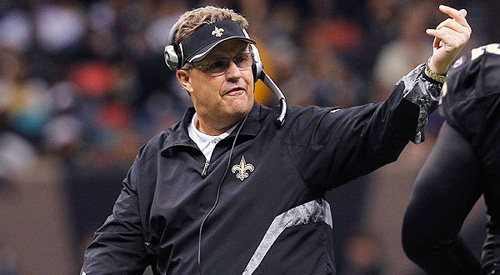
Gregg Williams’ bounties are just the surface of a larger issue
The story of former New Orleans Saints’ defensive coordinator Gregg Williams and his bounty program has consumed much of the football media coverage over the last couple weeks, and for good reason; there’s plenty that’s disturbing about the behaviour of Williams (particularly his leaked pre-game speech before the Saints’ playoff clash against San Francisco), and it’s tough to argue with the strict penalties the league handed down against him and the Saints.
However, the Saints’ bounty saga has led to other reports of (player-funded) bounties and plans to injure opponents around the league and even in other leagues such as the CFL, but those reports haven’t led to much action thanks to the focus on Williams and the Saints.
While it’s true that the Williams case has additional problematic layers thanks to involvement from coaches and salary-cap violations, bounties for causing injuries (or even just plans to injure opponents without outright financial incentives) are a terrible idea, and one that safety-focused leagues need to stamp out across the board.
The Saints’ case is receiving the bulk of the attention because of the disturbing process involved. In a league that’s trying to improve its safety record, there’s something clearly and obviously wrong with an authority figure ordering players to take opponents out and rewarding them financially (outside the limitations of the collective bargaining agreement) if they do so.
[php snippet=1]
By contrast, players pooling their own money for similar rewards may not instantly set off as many alarms and the league-wide reports that such practices are relatively common have received little follow-up investigation or discipline. When there are no finances involved, the story disappears even faster; the New York piece on the eventual Super Bowl champion New York Giants plotting to concuss San Francisco 49ers punt returner Kyle Williams was passed around for a day or two, but quickly fell off the map, even if it’s quite possible that plan was inspired by similar pre-game instructions to those Gregg Williams delivered to the Saints, just without the bounties.
Sure, the Saints’ process is more troubling, but it doesn’t have much of an impact on Kyle Williams’ future health if the man who goes out of his way to concuss him gets paid extra for it or not.
At the core of the situation, this is what it comes down to. Knocking players out of the game is a desirable short-term outcome, sure, and it’s one that has historical precedent throughout football. However, the more we learn about the long-term consequences of concussions (and specifically their links to chronic traumatic encephalopathy and other neurological diseases), the more important it becomes to take those into account.
There’s still a lot to learn about concussions, but everything we’ve learned thus far is horrifying and it seems unlikely the picture’s going to get better. Thus, if football’s going to survive for the long term, leagues need to do everything possible to reduce concussions and one of the key steps here is eliminating the idea of targeting opponents’ heads.
Sure, that may go against the immediate historical precedent where football’s all about taking the other guy out, but the reality is the sport has already evolved substantially over the years and that evolution has sometimes been because of safety concerns. One of the main reasons we still have football today comes from Teddy Roosevelt’s 1905 presidential summit in the wake of an epidemic of gridiron deaths, which resulted in dramatic changes to the game to avoid it being banned. Today’s deaths that may be related to football aren’t as immediate or as noticeable, but they’ve already led to numerous lawsuits and political initiatives and the sport may be better off if it changes willingly before it is forced to.
To their credit, the NFL, NCAA and CFL have already made substantial progress on concussion reduction and treatment, but these bounty stories are evidence that a dramatic culture change in the game is still needed.
It won’t be easy to accomplish that, but progress in that direction will help everyone: players may not be able to target others’ heads, but they also won’t be targets in the same way and leagues will be much more viable long-term if they’re producing less concussions.
An important step along that path is removing not just coach-sponsored bounties, but player-sponsored ones, and even non-financial instructions to target other players’ heads.
Gregg Williams’ bounties may have been football’s most egregious, but even the more subtle ones can be equally hazardous to players’ long-term health and football’s long-term survival.
[php snippet=1]

